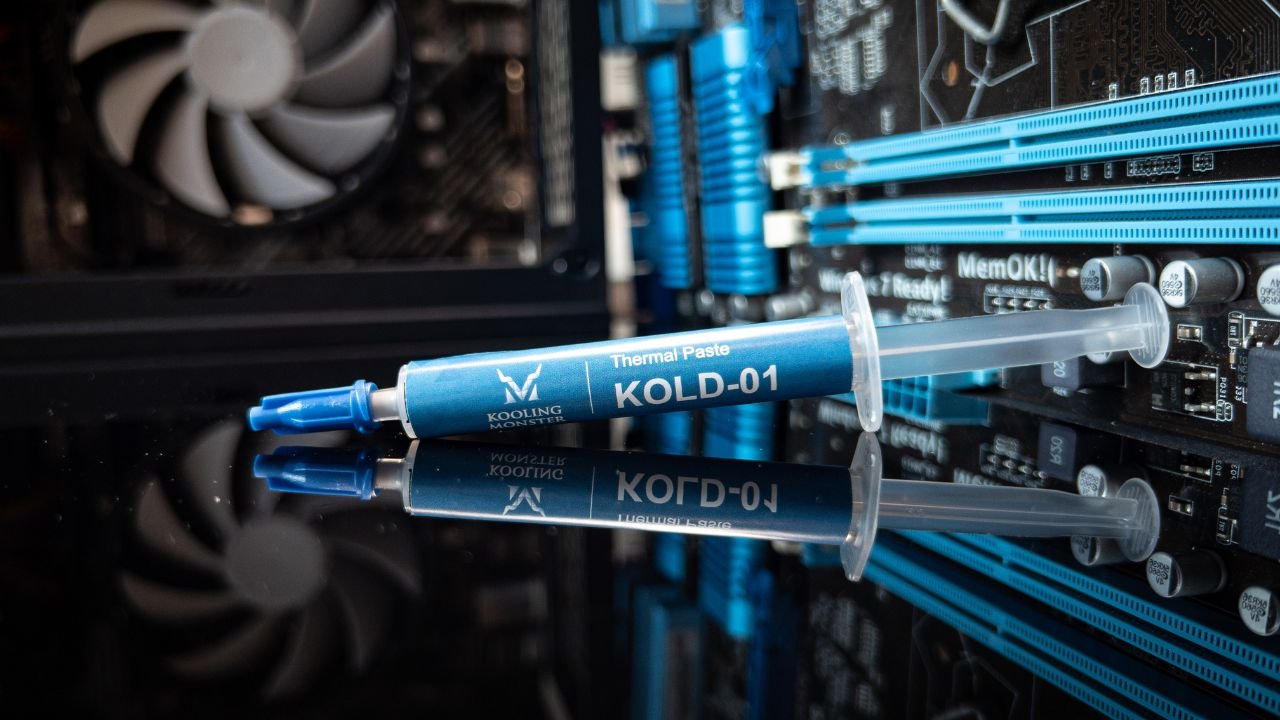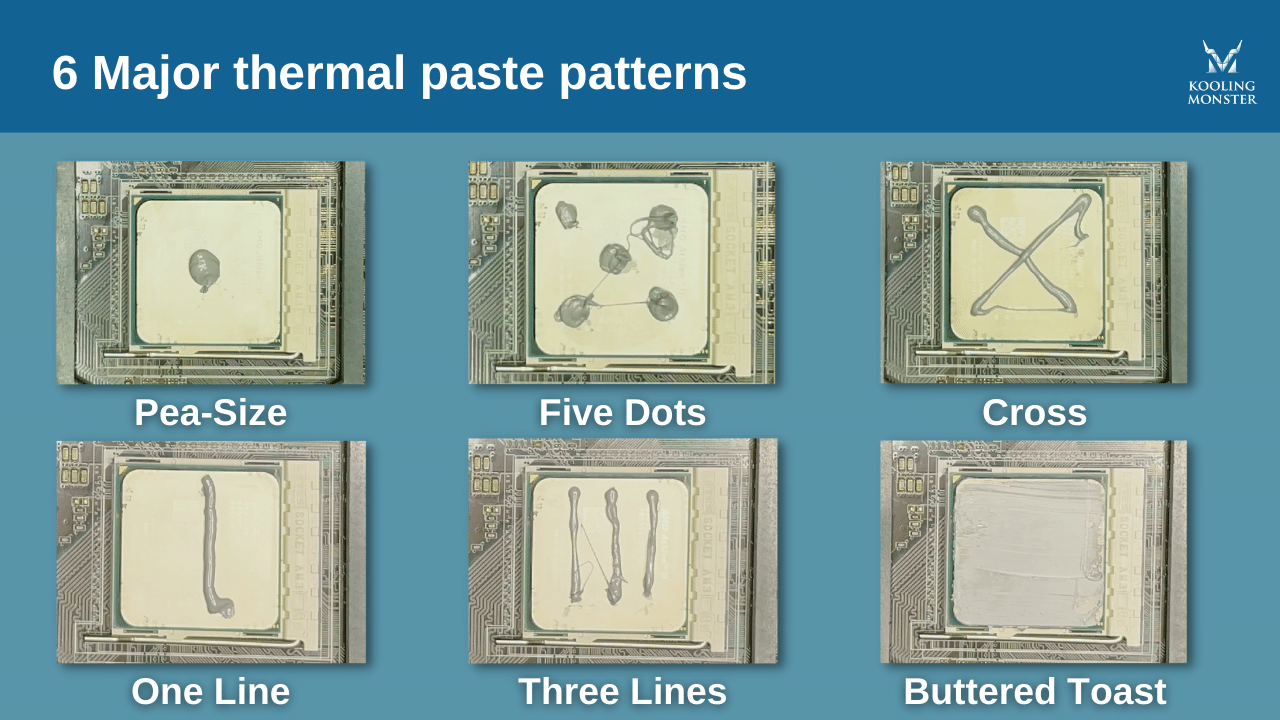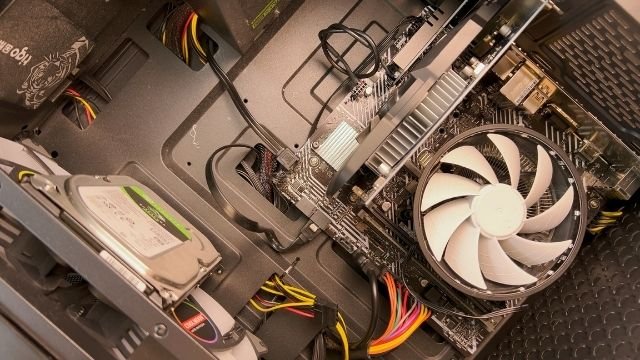Estimate How Much Thermal Paste You Need on CPU/GPU With a Calculator
You may not have known this, but the amount of thermal paste you apply to your CPU and GPU can massively change their thermal performance. But how, exactly, can you figure out the correct amount of paste you should apply? Well, to help you figure out the number, we not only performed a 15-hour-long case study, but also made an estimation calculator.
Let’s tell you what we found.
Estimation calculator
To help you estimate the needed thermal paste amount easier, we have built a handy Estimation Calculator. Before getting started, make sure you know the size, i.e., the length and width of your CPU. If you don’t, check its specifications page and you’ll find it there.
You also need to input the specifications of your thermal paste. If you have Kooling Monster KOLD-01 Thermal Paste, you don’t need to worry about that, as we have already entered the specifications for you. All you need to do is pick your tube size. If you have a thermal paste from another brand, you need to input its density. You can find that written on the packaging, or on the product page.
Case study summary: The proper amount of thermal paste
The amount of thermal paste you need to apply depends on the size of the processor, as well as a few other factors (which we will discuss later in the article).
We performed our case study on a 3cm by 3cm CPU size and applied 0.1ml, 0.2ml, and 0.3ml thermal pastes to see which one performs the best. According to what we found, 0.2ml thermal paste works the best on a 30mm by 30mm CPU.
As you can see by the case study graph below, 0.2ml thermal paste kept the CPU the coolest in each scenario.
While a difference of 1 degree Celcius may not feel like a lot on paper, trust us, it matters a lot in terms of CPU and GPU temperatures. You want to keep keep your computer as cool as possible, even a decimal of a degree matters.
How much thermal paste on CPU can generate the best cooling performance
To ensure your CPU enjoys the best thermal performance, you need to make sure you’re applying the right amount of thermal paste.
If you apply too little, the thermal paste layer will be too thin, and empty spaces may be left behind. Due to these compromises, the heat won’t be able to travel from the CPU to the heatsink effectively. If you apply too much thermal paste, the layer would become too thick, which, again, reduces the effectiveness of the heat transfer.
The “right” amount may not be that simple to figure out, though. As mentioned earlier, it depends on your CPU size, as well as a few other factors. The bigger the CPU, the more thermal paste would be needed to cover the entire surface area.
Plus, the pattern you use to apply the thermal paste also makes a difference. The goal is to apply a thin and even layer of thermal paste over the entire area of the CPU, and you may use one of the 6 application methods for that.
For the first 5 application methods, i.e., pea-size, 5 dots, one line, 3 lines, or cross, you would rely on the heatsink’s pressure to even out the thermal paste on the CPU. These methods are suitable for people who have at least some experience in applying thermal pastes. You would need to make a precise estimate as to how much paste you’ve applied, as you won’t be able to see it after you’ve put down the heatsink.
If you use the buttered toast method, you’d use a spatula or a spreader to spread out the thermal paste on the CPU. This method is better suited for beginners as you can always see whether the layer is thin and even. If it’s not, simply use the spreader to make it even. This method also allows you to remove excess thermal paste beforehand.
Case study: Correct amount of thermal paste
Before we get into the results, let’s talk about the setup we used for the case study. For this test, we intentionally used a weaker cooling setup, only so we could more accurately measure the thermal performance differences among different scenarios.
Thermal paste
Thermal paste quantity
● 0.1ml, 0.2ml, and 0.3ml
PC specs
● Intel Core i3-10105F (3cm x 3cm) CPU
● Asus H510M-E Motherboard
● Air Cooling Golden Field
● ADATA 8GB Memory
Software
● AIDA 64 for the stress test
● HWinfo to measure temperature
Results
0.1ml
No matter which application method we used, 0.1ml wasn’t enough to cover up the entire surface of the CPU and fill all the gaps, so the thermal performance was quite bad.
0.2ml
0.2ml thermal offered the best thermal performance, no matter which application method we used. That’s because 0.2ml is the perfect amount to be applied on this size of CPU.
0.3ml + Pea-size, 5-dots, 1-line, 3-lines, cross methods
This setup didn’t provide satisfying results. 0.3ml forms a thick layer of thermal paste, which increases the physical distance between the heatsink and the processor, hence reducing thermal performance.
0.3ml + Buttered toast
When we applied 0.3ml using the buttered toast method, the excess paste got removed automatically while spreading. So, the performance was up to par.
So, if you have a 30mm by 30mm CPU, 0.2ml thermal paste is the optimum amount for you to apply. If you have a different CPU size, simply use our calculator to find out the correct amount. If you’re going to use the buttered toast method, it’s okay to use more than 0.2ml, as you will remove the extra amount during spreading anyway.
However, applying 0.1ml or less isn’t suitable in any case.
The bottom line
Estimating the right amount of thermal paste to apply to your CPU could be a daunting task, but not anymore! After reading this post, you now know exactly how you can calculate the amount of thermal paste you need to apply.
Plus, you’ve got yourself our handy thermal paste calculator, which conveniently calculates the needed amount for your specific CPU.
FAQ
What factors determine the correct amount of thermal paste to apply on a CPU/GPU?
The correct amount of thermal paste for a CPU/GPU depends on the size of the processor and other factors such as the application pattern. A larger CPU requires more thermal paste, and different application methods may require different amounts. The article suggests using their Estimation Calculator for precise measurements.
How does the application method affect the amount of thermal paste needed?
The application method can influence the distribution of thermal paste on the CPU/GPU. Techniques like the pea-size, 5 dots, one line, 3 lines, or cross rely on the heatsink’s pressure to spread the paste, requiring a precise estimate of the amount applied. The buttered toast method allows beginners to manually spread and adjust the paste for an even layer.
What is the consequence of applying too little or too much thermal paste?
Applying too little thermal paste might leave empty spaces, reducing the effective heat transfer from the CPU to the heatsink. Conversely, applying too much paste can create a layer too thick, also reducing the heat transfer effectiveness. According to the article's case study, for a 30mm x 30mm CPU, 0.2ml of thermal paste was optimal.
What were the key findings from the case study about thermal paste quantities?
The case study, conducted on a 30mm x 30mm CPU, revealed that 0.2ml of thermal paste provided the best thermal performance across different application methods. Applying 0.1ml was insufficient to cover the CPU surface and fill all gaps, and 0.3ml created a thick layer that reduced thermal performance unless spread out using the buttered toast method.
How does the thermal paste calculator provided in the article work?
The thermal paste calculator estimates the optimal amount of thermal paste for a specific CPU based on its size and the properties of the paste being used. The user needs to input the size of their CPU and the specifications of their thermal paste, and the calculator provides the estimated amount to apply for optimal performance.




